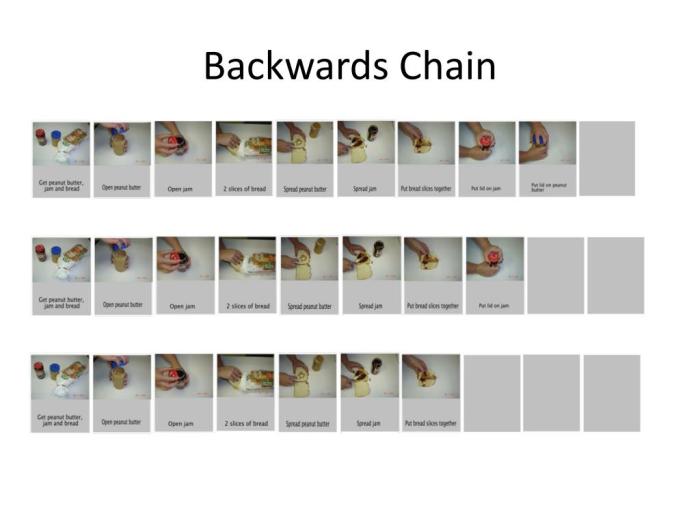Putting on shirt task analysis – Embarking on a thorough examination of putting on a shirt, this analysis delves into the intricacies of this seemingly mundane task, revealing the physical, cognitive, and environmental factors that shape its execution.
From the initial grasp of the garment to the final adjustment of its collar, we explore the steps involved, the skills required, and the potential challenges that may arise, providing a comprehensive understanding of this fundamental daily activity.
Task Overview

Putting on a shirt is a common task that most people perform daily. It involves several steps and requires coordination and fine motor skills. Understanding the steps involved can help individuals improve their independence and daily living skills.
The task of putting on a shirt can be broken down into the following steps:
Step 1: Preparing the Shirt
- Lay the shirt flat on a surface, with the front facing up.
- Locate the collar and identify the front and back of the shirt.
Step 2: Putting on the Shirt
- Stand in front of the shirt and insert your arms into the sleeves.
- Pull the shirt up over your head, ensuring the collar is around your neck.
Step 3: Adjusting the Shirt
- Pull the shirt down evenly on both sides.
- Smooth out any wrinkles or creases.
- Button or zip up the shirt, if necessary.
Step 4: Completing the Task
Once the shirt is adjusted and fastened, the task of putting on the shirt is complete.
Physical Requirements

Putting on a shirt requires certain physical capabilities to execute the task effectively. Understanding the range of motion, strength, and coordination involved is essential for successful completion.
The task demands adequate mobility in the upper body, particularly in the shoulders and elbows. The ability to reach overhead and behind the back is crucial for positioning the shirt correctly. Additionally, sufficient strength in the arms and hands is necessary for manipulating the fabric, pulling it over the body, and securing it with buttons or zippers.
Range of Motion
The task involves a wide range of motion in the upper body. The shoulders must be able to abduct (lift away from the body), flex (bend forward), and externally rotate (turn outward). The elbows need to flex and extend fully to bring the arms overhead and behind the back.
Additionally, the wrists require flexion and extension for manipulating the shirt and securing it.
Strength
Putting on a shirt requires moderate strength in the arms and hands. The ability to lift the shirt overhead and pull it down over the body necessitates adequate strength in the shoulders and biceps. Additionally, sufficient strength in the hands is essential for gripping and manipulating the fabric, as well as for buttoning or zipping up the shirt.
Coordination
Successful completion of the task requires coordination between the arms, hands, and body. The individual must be able to coordinate the movement of both arms simultaneously while maintaining balance and stability. Additionally, hand-eye coordination is necessary for aligning the shirt correctly and manipulating the buttons or zippers.
Cognitive Requirements
Putting on a shirt involves cognitive processes that enable individuals to understand and execute the task effectively.
Problem-Solving
* Recognizing the orientation of the shirt (front, back, sleeves)
- Determining the correct sequence of steps for putting on the shirt
- Adapting to unexpected situations, such as a torn or wrinkled shirt
Decision-Making
* Choosing the appropriate size and style of shirt
- Selecting the most efficient way to put on the shirt (e.g., over the head or buttoning up)
- Deciding whether to tuck in the shirt or leave it untucked
Memory
* Recalling the steps involved in putting on a shirt
- Remembering the orientation and placement of buttons, zippers, or other closures
- Retaining information about previous experiences with different types of shirts
Environmental Factors: Putting On Shirt Task Analysis
Environmental factors can significantly impact the task of putting on a shirt. These factors include lighting, temperature, and noise levels.
Lightingis essential for visibility. Poor lighting can make it difficult to see the shirt and the body, leading to mistakes or accidents. Natural light is ideal, but artificial light can also be used if it is bright enough.
Temperature
Temperature can also affect the task. If it is too cold, the person may be shivering, making it difficult to put on the shirt. If it is too hot, the person may be sweating, making the shirt slippery and difficult to handle.
Noise Levels
Noise levels can be distracting and make it difficult to concentrate on the task. If the noise level is too high, the person may make mistakes or even give up on the task.
Equipment and Materials
To perform the task of putting on a shirt, the following equipment and materials are required:
Each item serves a specific purpose and function to facilitate the task’s successful execution.
Shirt
- A shirt is the primary item of clothing being put on.
- It can be made from various materials, including cotton, polyester, or a blend of fabrics.
- The shirt’s size and style should be appropriate for the individual wearing it.
Hangers
- Hangers are used to keep the shirt organized and wrinkle-free when not in use.
- They come in various shapes and sizes to accommodate different types of shirts.
- Hangers can be made from wood, plastic, or metal.
Iron and Ironing Board
- An iron and ironing board are used to remove wrinkles from the shirt.
- The iron heats up and presses the fabric, smoothing out any creases.
- The ironing board provides a stable surface for ironing.
Other Optional Items
- Collar stays can be used to keep the shirt collar stiff and upright.
- Cufflinks can be used to secure the shirt cuffs.
- A lint roller can be used to remove any lint or debris from the shirt before wearing it.
Safety Considerations
Putting on a shirt involves minimal safety hazards. However, certain precautions should be taken to ensure a safe environment.
Potential Safety Hazards:
- Tripping or falling:When putting on a shirt, it’s essential to be aware of your surroundings and avoid tripping over objects or uneven surfaces.
- Muscle strain:If the shirt is too tight or restrictive, it can cause muscle strain or discomfort when trying to put it on.
- Skin irritation:Some fabrics or materials may cause skin irritation or allergic reactions.
Guidelines for Minimizing Risks:
- Clear your surroundings:Ensure there are no obstacles or tripping hazards in the area where you’re putting on the shirt.
- Choose appropriate clothing:Select a shirt that fits comfortably and allows for ease of movement.
- Use caution with fabrics:If you have sensitive skin, test the fabric of the shirt on a small area of your skin before wearing it for an extended period.
Training and Development

To ensure individuals can effectively perform the task of putting on a shirt, comprehensive training and development programs are crucial. These programs should encompass various training methods, resources, and evaluation techniques to enhance skill acquisition and foster proficiency.
Training Methods
- On-the-Job Training:This method involves practical, hands-on guidance under the supervision of an experienced trainer. Trainees observe and practice the task in a real-world setting, receiving immediate feedback and support.
- Classroom Training:This method provides theoretical knowledge and step-by-step instructions through lectures, demonstrations, and group discussions. Trainees gain a comprehensive understanding of the task and its underlying principles.
- Simulation Training:This method utilizes virtual or physical simulations to replicate the task environment. Trainees can practice and refine their skills in a controlled setting, reducing potential risks and maximizing learning efficiency.
Training Resources
- Training Manuals:These written guides provide detailed instructions, diagrams, and safety protocols for the task. They serve as a valuable reference for trainees and trainers alike.
- Training Videos:These visual aids demonstrate the task step-by-step, allowing trainees to observe the correct techniques and sequence of movements.
- Online Resources:E-learning platforms and online tutorials offer interactive and accessible training materials, enabling trainees to learn at their own pace and convenience.
Evaluation Techniques
- Observation:Trainers directly observe trainees performing the task to assess their proficiency, accuracy, and adherence to safety protocols.
- Practical Tests:Trainees demonstrate their ability to put on a shirt independently, without assistance or supervision.
- Feedback and Assessment:Trainers provide constructive feedback and evaluate trainees’ progress throughout the training program, identifying areas for improvement and ensuring skill mastery.
Assessment and Evaluation

Evaluating task performance is crucial for identifying areas of improvement and ensuring the task is carried out effectively. This assessment should consider various criteria, including accuracy, efficiency, and safety.
Accuracy refers to the correctness and precision of the task execution. It can be measured by comparing the individual’s performance against established standards or criteria. Efficiency measures how quickly and smoothly the task is completed without compromising accuracy. This can be assessed by observing the time taken to complete the task and identifying any unnecessary steps or delays.
Safety Considerations
Safety is paramount, and its assessment should focus on adherence to established safety protocols and the prevention of potential hazards. This includes observing the individual’s compliance with safety guidelines, such as wearing appropriate protective gear and following proper procedures.
Putting on a shirt might seem like a simple task, but it actually involves a complex series of steps. If you’re looking for some help with this skill, be sure to check out the saxon math grade 5 answer key . It provides detailed instructions and visuals to guide you through the process.
After mastering this skill, you’ll be able to put on a shirt with ease!
Troubleshooting
Putting on a shirt is a straightforward task, but certain issues may arise during the process. Understanding and addressing these common problems can help ensure a smooth and efficient shirt-wearing experience.
Troubleshooting involves identifying the root cause of an issue and implementing appropriate solutions to resolve it. Here are some common problems and troubleshooting tips for putting on a shirt:
Difficulty Putting Arms Through Sleeves
- Sleeves too narrow:Choose a shirt with sleeves that are wide enough to accommodate your arms comfortably.
- Arms stuck at elbow:Bend your elbows slightly and try to push your arms through the sleeves simultaneously.
- Sleeves twisted:Check if the sleeves are twisted inside out. If so, untwist them before attempting to put your arms through.
Shirt Not Fitting Properly
- Shirt too tight:Select a shirt that is the appropriate size for your body type. If the shirt is too tight, it will restrict movement and cause discomfort.
- Shirt too loose:Choose a shirt that is snug but not overly loose. A loose shirt can appear unkempt and hinder movement.
- Shirt length incorrect:Ensure that the shirt is the correct length for your torso. A shirt that is too short or too long will not provide adequate coverage or comfort.
Wrinkles in Shirt, Putting on shirt task analysis
- Shirt not ironed:Iron the shirt before wearing it to remove wrinkles and give it a polished appearance.
- Shirt folded incorrectly:When storing the shirt, fold it neatly to prevent creases and wrinkles.
- Shirt material prone to wrinkling:Choose fabrics that are less likely to wrinkle, such as wrinkle-resistant or non-iron materials.
Optimization and Improvement

Optimizing and improving the task of putting on a shirt involves identifying and implementing strategies to enhance efficiency, reduce errors, and ensure safety. These strategies can focus on optimizing individual steps within the task, streamlining the overall process, and creating a conducive work environment.
Increasing Efficiency
- Use a designated area:Establishing a specific area for putting on shirts helps minimize wasted time and effort by keeping all necessary materials within easy reach.
- Organize materials:Arrange shirts, buttons, and other materials in a logical order to minimize unnecessary searching and reduce errors.
- Use assistive devices:Employ tools like shirt buttoners or collar stays to facilitate the task and increase efficiency.
- Practice and repetition:Regular practice and repetition of the task can improve dexterity and reduce the time required for completion.
Clarifying Questions
What are the key physical requirements for putting on a shirt?
Range of motion in the shoulders, arms, and torso; strength in the hands and fingers; and coordination for precise movements.
How do cognitive skills play a role in putting on a shirt?
Problem-solving to determine the correct orientation of the shirt, decision-making to choose the appropriate size and style, and memory to recall the sequence of steps.
What environmental factors can affect the task of putting on a shirt?
Lighting for visibility, temperature for comfort, and noise levels for focus and concentration.